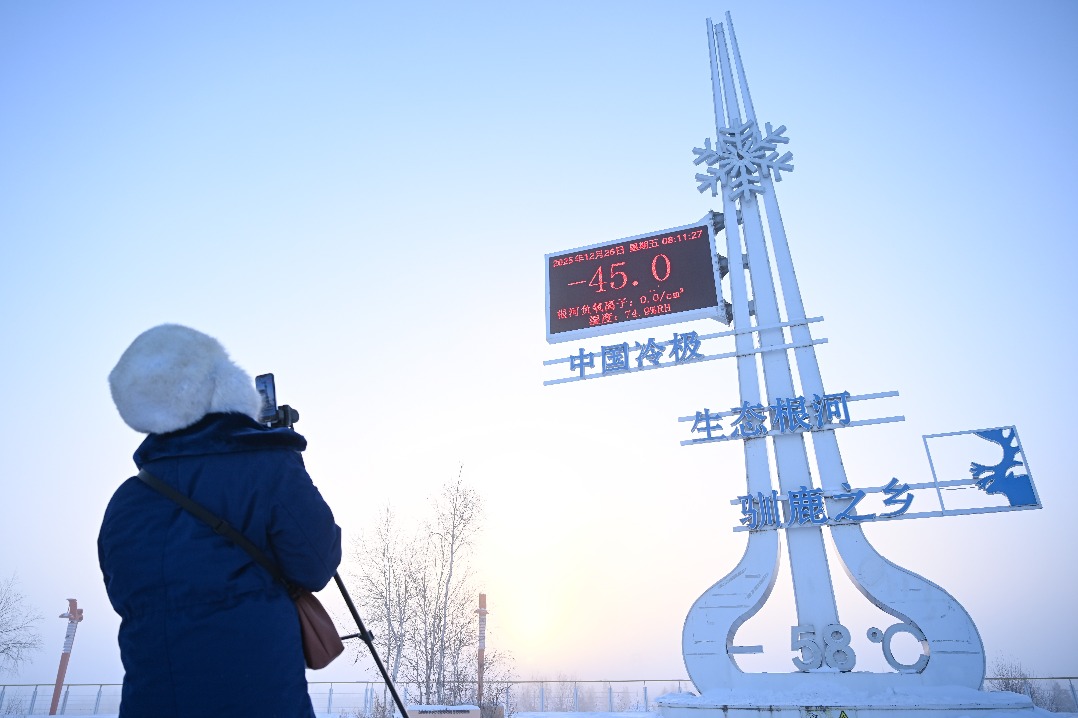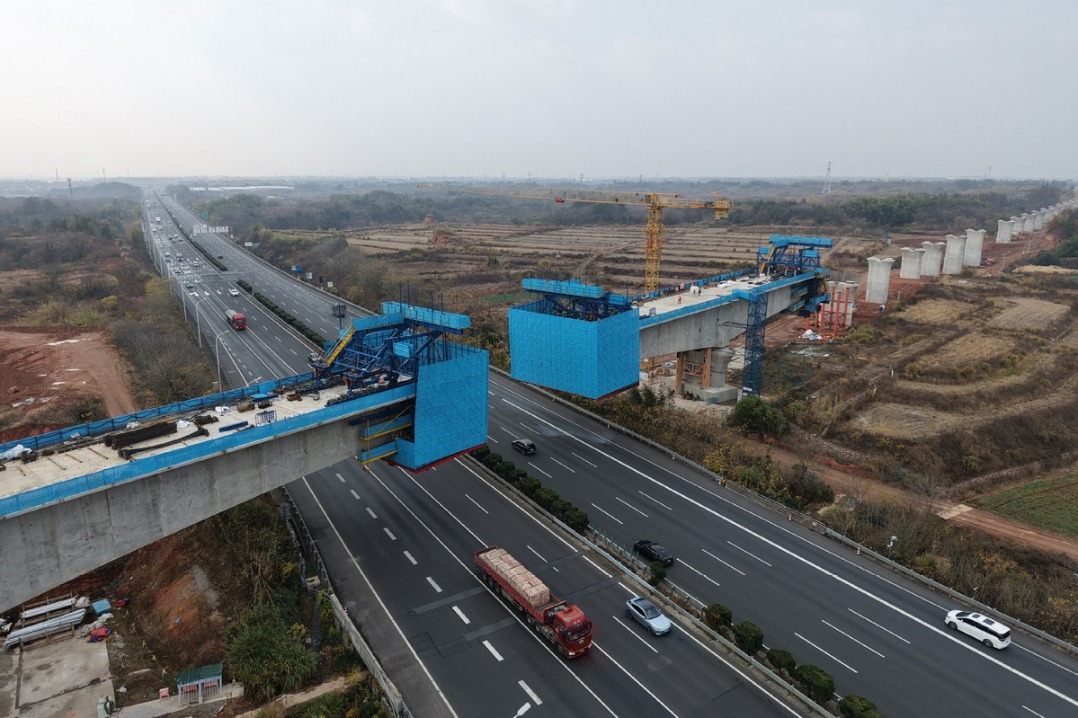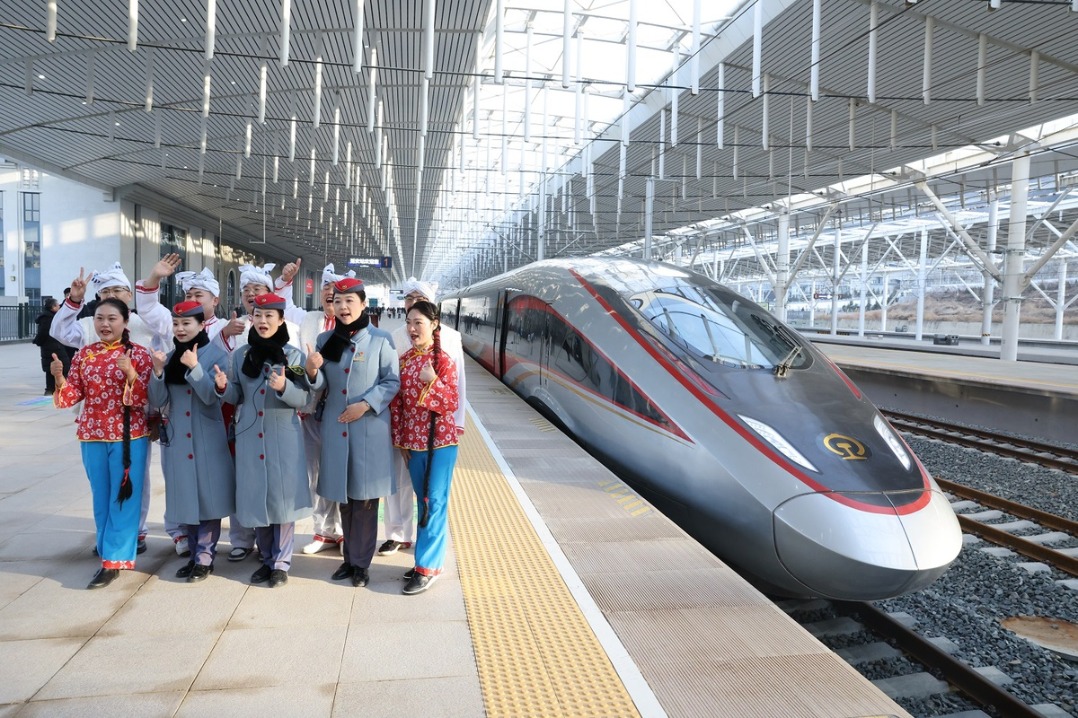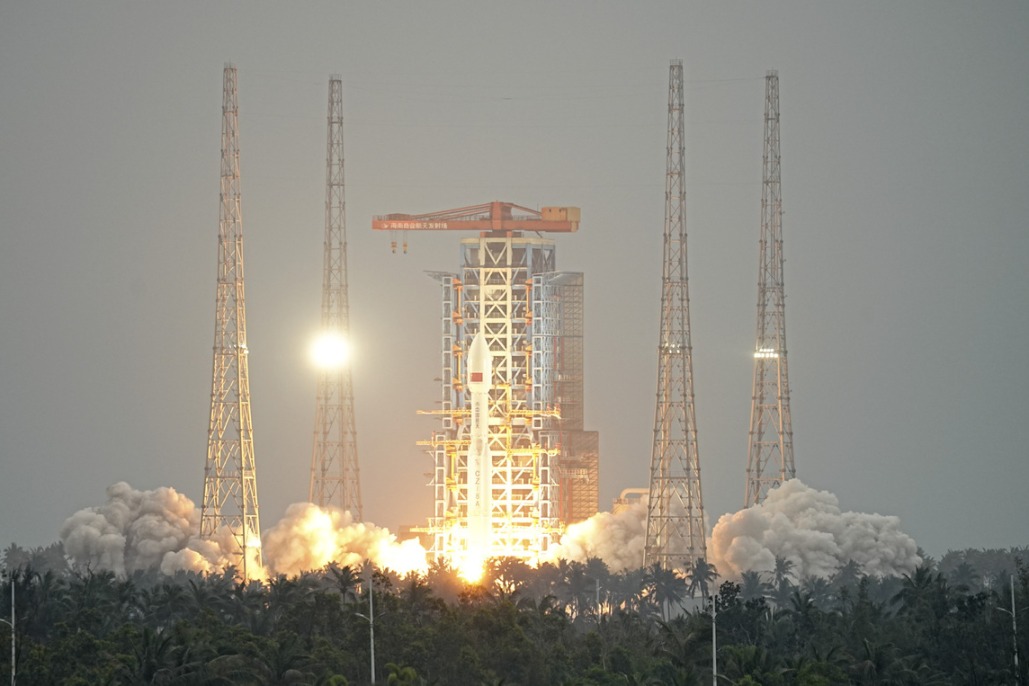'Sound camera' helps make rail lines quieter


Technology developed in China has helped improve noise control along the nation's railway lines, including its world-leading high-speed network, making trips more comfortable for passengers and bringing quieter lives to people living near the lines.
A national engineering laboratory in Tianjin is the base of the world's largest and most advanced sound source identification system for commercial use.
At first glance, the equipment, known as a sound camera and consisting of a big wheel with a supporting frame, resembles a mini Ferris wheel that lacks seats and cannot rotate.
A closer look at the 5-meter-diameter wheel reveals high-tech features like an array of 144 sensors used to capture, identify and analyze the source of noise on railways.
Engineers set up the equipment close to a railway line. When a train passes by, the machine captures the features of the noise it makes and generates a report for analysis.
It can be used to analyze all kinds of railway lines, including high-speed lines, freight lines and subways.
"It is like a sound radar for discovering noise along the railway when a train passes by," said Hu Wenlin, deputy head of the National Engineering Laboratory for Noise Control and Reduction at China Railway Design Corporation.
He added that the data produced by the machine allows engineers to have a better understanding of the sounds generated when a train passes by, such as which part produces the most noise.
After analyzing the data, engineers can formulate precise plans to reduce noise and make construction plans accordingly.
For example, if a railway passes a residential area with stricter noise abatement requirements, engineers can come up with a plan to minimize noise, usually at greater expense.
But if a railway passes a place with more relaxed noise control requirements, designers can make a cheaper plan.
"We can use the machine to carry out precise plans and invest the amount of money accordingly, which achieves the optimum balance of investment and construction," Hu said.
Noise control technologies have been applied to dozens of major railway projects across the country.
The sound camera, fully developed in China, is advanced by world standards, said Wang Changjin, deputy chief engineer at China Railway Design and also the director of the National Engineering Laboratory.
Before the sound camera was available, engineers usually used a pole fitted with sensors to measure sound and collect data along railway lines.
"It cannot be compared to the technique we are using now, which is far more accurate," Wang said.
The machine is just one of many innovations developed by the laboratory.
It has conducted many research projects on railways, leading to the development of key noise control equipment for high-speed railways and making railway lines and stations quieter.
- China seeks public feedback on draft rules for anthropomorphic AI services
- China's top legislature concludes standing committee session
- China adopts revised Civil Aviation Law
- China launches satellite to aid in early extreme weather detection
- Report on mining accident that killed 6 suggests accountability for 42 individuals
- Law aimed at bolstering standard Chinese language education passed





































